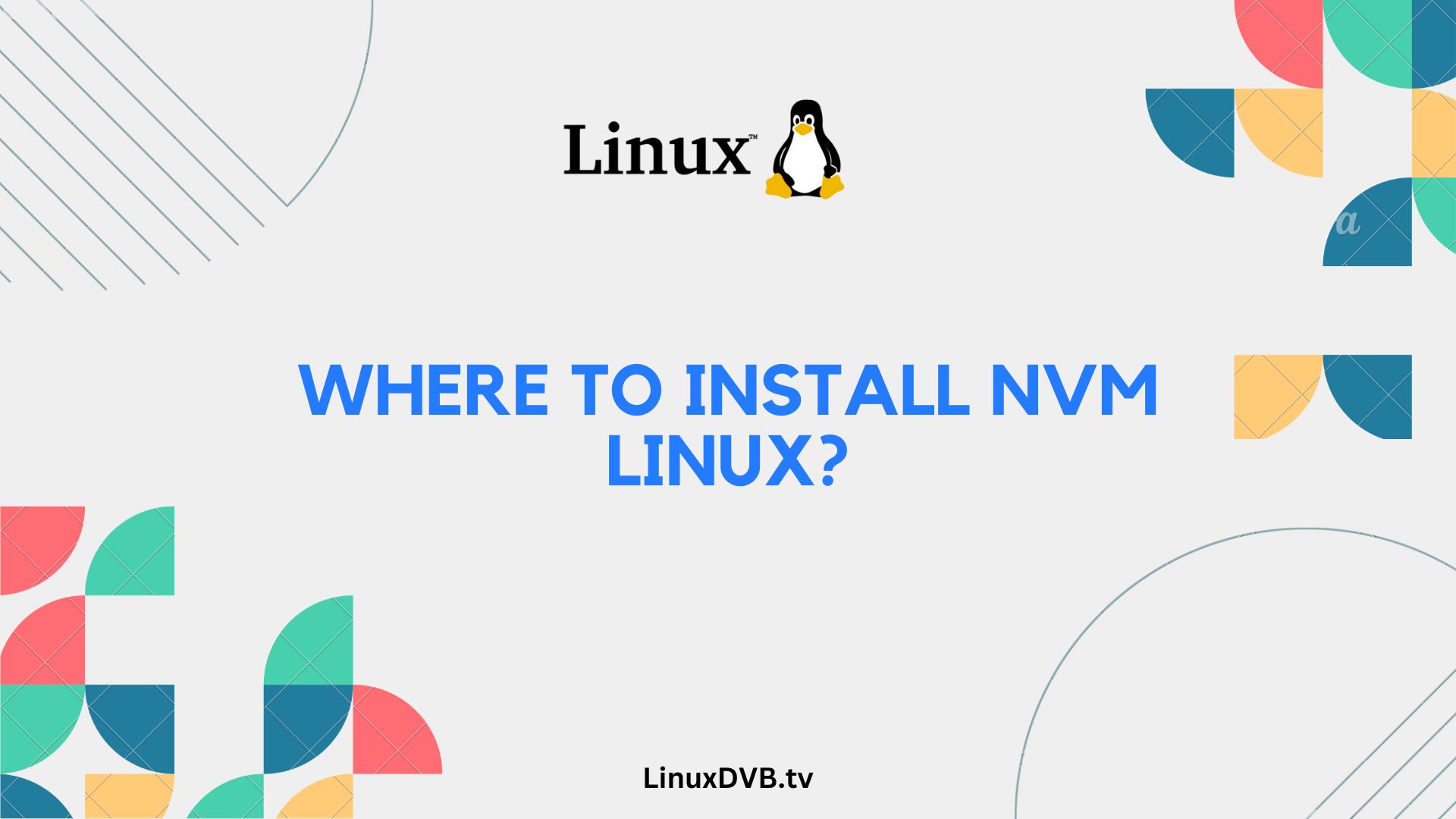Introduction
Welcome to the ultimate guide on “Where to Install nvm Linux?” If you’re looking to harness the power of Node.js on your Linux system, you’ve come to the right place. This article will provide you with a step-by-step approach to installing nvm (Node Version Manager) while offering valuable insights and recommendations. Let’s embark on this journey together to make your Linux environment Node.js-ready!
Table of Contents
1. What is nvm?
In this section, we delve into the basics of nvm, explaining what it is and why it’s essential for managing Node.js versions on your Linux system.
1.1. Understanding nvm’s Role
Discover how nvm simplifies Node.js version management, allowing you to switch between versions effortlessly.
2. Preparing Your Linux System
Before installing nvm, your system needs to meet certain requirements. We’ll guide you through the necessary preparations.
2.1. Checking System Compatibility
Learn how to check if your Linux distribution is compatible with nvm and Node.js.
2.2. Updating Package Manager
Ensure your package manager is up-to-date for a smooth installation process.
2.3. Installing Dependencies
Discover the essential dependencies needed to run nvm without a hitch.
3. Downloading and Installing nvm
Now comes the crucial step: installing nvm itself. We’ll show you how to do it.
3.1. Downloading nvm
Step-by-step instructions for downloading nvm from the official repository.
3.2. Installing nvm
Detailed guidelines on installing nvm on your Linux system.
4. Configuring nvm
After installation, it’s time to configure nvm to meet your needs and preferences.
4.1. Setting Default Node.js Version
Learn how to set your preferred Node.js version as the default.
4.2. Navigating Through Versions
Discover how to switch between different Node.js versions with ease.
5. Where to Install nvm Linux?
This section addresses the central question of our guide: where to place nvm on your Linux system for optimal performance.
5.1. Home Directory
Exploring the benefits and considerations of installing nvm in your home directory.
5.2. System-Wide Installation
Understanding the advantages and drawbacks of a system-wide installation.
5.3. Custom Directory
Learn how to install nvm in a custom directory tailored to your needs.
6. Troubleshooting Common Issues
Sometimes, things don’t go as planned. Here, we address common issues and provide solutions.
6.1. Permission Problems
What to do when you encounter permission-related challenges during installation.
6.2. Version Compatibility
Solving issues related to Node.js version compatibility.
7. Best Practices
Explore best practices for managing nvm and Node.js on your Linux system to ensure a seamless experience.
FAQs
Here are some frequently asked questions about installing nvm on Linux:
Can I install multiple versions of Node.js using nvm?
Yes, nvm allows you to manage multiple Node.js versions effortlessly.
Is it possible to uninstall nvm from my Linux system?
Absolutely. We’ll guide you through the process of uninstalling nvm when you no longer need it.
Does nvm support Windows or macOS?
No, nvm is primarily designed for Linux systems. However, there are alternatives for Windows and macOS users.
Can I use nvm with other package managers like npm and yarn?
Yes, nvm seamlessly integrates with npm and yarn, enhancing your Node.js development experience.
What are the advantages of using nvm over system-installed Node.js?
Nvm offers flexibility, allowing you to switch between Node.js versions and manage dependencies efficiently.
How often should I update nvm?
It’s a good practice to regularly update nvm to access the latest features and security updates.
How to install nvm in terminal?
Use a package manager like Homebrew or download the installation script from the official NVM repository and run it in your terminal.How to install nvm in Linux?
You can install NVM on Linux by using the installation script provided on the official NVM GitHub repository.Where to install nvm Linux?
You can install NVM on Linux in your home directory or any directory where you have write permissions. It’s commonly installed in the home directory.Conclusion
Congratulations! You’ve successfully learned “Where to Install nvm Linux?” With this knowledge, you can take control of your Node.js development environment on your Linux system. Whether you choose the home directory, system-wide installation, or a custom directory, nvm empowers you to work with Node.js effortlessly.

